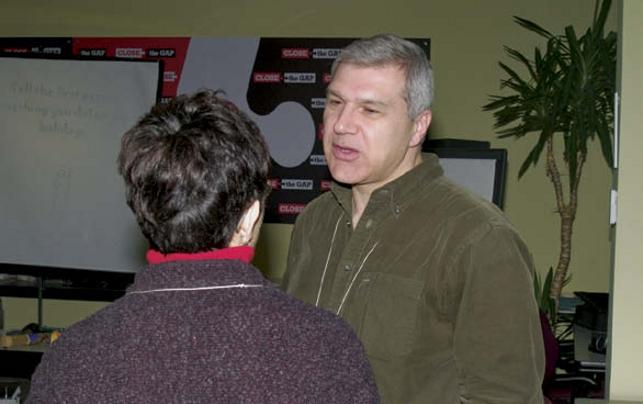
Reading the Signs (Disability Issues)
With the economy contracting, we are likely to see the resurrection of the myth that accessibility is just too costly. In fact, most workplace barriers to full participation could be eliminated with little or no cost attached. In some cases, all that is required are some small but important changes in the ways we interact with one another. A good illustration of this point is the social landscape inhabited by individuals who lip-read.
Reading more than lips
Lip-reading is also known as speech-reading. In practice, the two are used interchangeably, though to use speech-reading is to acknowledge that there is a lot more to the process than simply focusing on the lips. Any time you are able to see a person with whom you are conversing, you are unconsciously speech-reading – by picking up on facial expressions, intonation and speech cadence, the tilt of the head, hand gestures, and general body language.
Together with the facial motions connected with speech, these are important visual clues in conversation. For individuals with hearing loss, for those who are deaf, or for anyone who for whatever reason requires visual content as input for auditory processing, the absence of these conversational clues can create significant barriers to understanding. As Canadian artist and activist Gael Hannan has put it, “Speech-reading is about human interaction.”
Achieving better communication
The odds are good that you interact on a regular basis with someone who lip-reads to one degree or another, though you may not be aware of it, especially in the workplace. If you have a friend or family member who lip-reads, however, you have probably found some combination of the following principles to be useful in achieving better communication:
- It is important to directly face the person you are conversing with, and to resist the temptation to call out from another room.
- Visual clues are easier to see at a distance of one metre than from 10 metres.
- Where possible, try to ensure that you are standing or sitting in good light, and that your face is not in shadow.
- Your face should be visible, not partially covered by your hands, coffee mug, sandwich, or other obstructions.
- When in a group, try to ensure that only one person is speaking at a time.
Following these guaranteed, cost-free, barrier-busting strategies makes good sense in our cost-conscious times. Like any change in entrenched habits, however, they may take some practice. In meetings, for example, it may feel counterintuitive, or even discourteous, to sometimes be facing an individual other than the one you are addressing. But the result may well be that your 10-person meeting will actually include 10 full participants, and not nine.